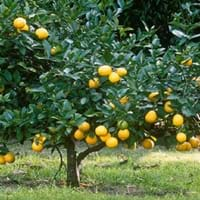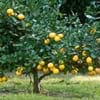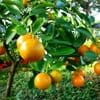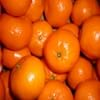Life Span
Perennial
Perennial
Type
Fruit
Flowering Plants, Fruits, Trees
Origin
Asia
Anatolia, Asia, Europe, Iran, Maghreb, Morocco, Norway, The Hiamalayas
Types
Avalon Lemon, Bears Lemon, Buddha's Hand, Bush Lemon, Citron
Flowering Cherries, Sour Cherries, Sand Cherries, Sweet Cherries, Capulin Cherries
Habitat
Mixed deciduous forest, Tropical regions
Forest edges, Wild, Woods
USDA Hardiness Zone
9-12
4-8
Sunset Zone
H1, H2, 8, 9, 12, 13, 14, 15, 16, 17, 18, 19, 20, 21, 22, 23, 24
4, 5, 6, 7, 15, 16, 17
Habit
Oval or Rounded
Upright/Erect
Flower Color Modifier
Bicolor
Not Available
Fruit Color
Yellow, Lemon yellow
Red
Leaf Color in Spring
Green
Dark Green
Leaf Color in Summer
Green
Orange
Leaf Color in Fall
Green
Orange
Leaf Color in Winter
Light Green
Orange
Plant Season
Spring, Summer, Fall, Winter
Spring, Summer
Sunlight
Full Sun, Partial Sun
Full Sun, Partial shade
Growth Rate
Medium
Medium
Type of Soil
Loam, Sand
Loamy, Well drained
The pH of Soil
Acidic, Neutral
Slightly Acidic
Soil Drainage
Well drained
Average
Bloom Time
Indeterminate
Early Spring, Spring
Tolerances
Drought
Heat And Humidity, Not Available
Where to Plant?
Container, Ground
Ground
How to Plant?
Seedlings
Grafting, Seedlings, Transplanting
Plant Maintenance
Medium
Medium
Watering Requirements
Keep the ground moist but not water-logged, occasional watering once established
Never Over-water, Over-watering can cause leaf problems or root diseases, Prefer drip-irrigation instead of Over-head watering, Water twice a day in the initial period
In Summer
Lots of watering
Lots of watering
In Spring
Moderate
Moderate
In Winter
Average Water
Average Water
Soil pH
Acidic, Neutral
Slightly Acidic
Soil Type
Loam, Sand
Loamy, Well drained
Soil Drainage Capacity
Well drained
Average
Sun Exposure
Full Sun, Partial Sun
Full Sun, Partial shade
Pruning
Generally pruned to waist height, pruning needed for strong structure, Remove damaged leaves, Remove dead branches, Remove dead leaves
Don't prune in the fall, Prune if you want to improve plant shape, Prune in late winter, Remove dead or diseased plant parts, Remove deadheads
Fertilizers
All-Purpose Liquid Fertilizer, Doesn't require fertilization when grown in rich soil
All-Purpose Liquid Fertilizer
Pests and Diseases
Aphids, Grasshoppers, Leafminers, Red blotch, Rust, Snails
Aphids, Bacterial Canker, Black Knot, Brown Rot, Caterpillars
Plant Tolerance
Drought, Drought and Salt
Drought
Flower Petal Number
Single
Not Available
Fragrant Bark/Stem
Yes
No
Foliage Texture
Medium
Not Available
Foliage Sheen
Glossy
Not Available
Attracts
Birds, Butterflies
Birds
Allergy
Diarrhea, Hyperacidity, Sore Throat, Whooping Cough
Swelling in the face
Aesthetic Uses
Cottage Garden
Showy Purposes
Beauty Benefits
Glowing Skin, Maintains teeth healthy, Making cosmetics, Nourishes scalp, Perfumes, Skin inflammation
Not Available
Environmental Uses
Air purification, Fixes Nitrogen, Insect Repellent, soil stabilisation
Air purification
Medicinal Uses
Acne, Antibacterial, Antirheumatic, Appetizer, Bone strength, Digestion problems, Hangover, Healthy teeth, Nutrients, Obesity, Oral health, Skin irritation
Arthritis, Gout, Kidney problems, Rheumatoid arthritis, Swelling
Part of Plant Used
Bark, Fruits, Leaf Stalks, Leaves
Flowers, Fruits
Other Uses
Air freshner, Biomass for fuel, Can be made into a herbal tea, Leaves are used as mosquito repellent, Making Perfumes, Preferably used as black tea, Used as a nutritious food item
Wood is used for making furniture
Used As Indoor Plant
No
No
Used As Outdoor Plant
Yes
Yes
Garden Design
Container, Edible, Fruit / Fruit Tree, Hedges, Houseplant, Mixed Border, Topiary / Bonsai / Espalier, Tropical
Not Available
Botanical Name
CITRUS limon
Prunus avium
Common Name
Lemon
Cherry Tree
In Hindi
नींबू
चेरी का पेड़
In German
Citrone or Limone or Zitrone
Kirschbaum
In French
Citron or Citronnier
Cerisier
In Spanish
Limón or Limonero
Cerezo
In Greek
Λεμόνι [Lemóni]
κερασιά
In Portuguese
Limão
árvore de cereja
In Polish
Cytrynowy
wiśniowe drzewo
Phylum
Magnoliophyta
Magnoliophyta
Class
Magnoliopsida
Magnoliopsida
Clade
Rosids
Angiosperms, Eudicots, Rosids
Tribe
Not Available
Not Available
Subfamily
Not Available
Not Available
Number of Species
Not Available
Importance of Lemon and Cherry Tree
Want to have the most appropriate plant for your garden? You might want to know the importance of Lemon and Cherry Tree. Basically, these two plants vary in many aspects. Compare Lemon and Cherry Tree as they differ in many characteristics such as their life, care, benefits, facts, etc. Every gardener must at least have the slightest clue about the plants he wants to plant in his garden. Compare their benefits, which differ in many ways like facts and uses. The medicinal use of Lemon is Acne, Antibacterial, Antirheumatic, Appetizer, Bone strength, Digestion problems, Hangover, Healthy teeth, Nutrients, Obesity, Oral health and Skin irritation whereas of Cherry Tree is Arthritis, Gout, Kidney problems, Rheumatoid arthritis and Swelling. Lemon has beauty benefits as follows: Glowing Skin, Maintains teeth healthy, Making cosmetics, Nourishes scalp, Perfumes and Skin inflammation while Cherry Tree has beauty benefits as follows: Glowing Skin, Maintains teeth healthy, Making cosmetics, Nourishes scalp, Perfumes and Skin inflammation.
Compare Facts of Lemon vs Cherry Tree
How to choose the best garden plant for your garden depending upon its facts? Here garden plant comparison will help you to solve this query. Compare the facts of Lemon vs Cherry Tree and know which one to choose. As garden plants have benefits and other uses, allergy is also a major drawback of plants for some people. Allergic reactions of Lemon are Diarrhea, Hyperacidity, Sore Throat and Whooping Cough whereas of Cherry Tree have Swelling in the face respectively. Having a fruit bearing plant in your garden can be a plus point of your garden. Lemon has showy fruits and Cherry Tree has showy fruits. Also Lemon is not flowering and Cherry Tree is flowering. You can compare Lemon and Cherry Tree facts and facts of other plants too.





